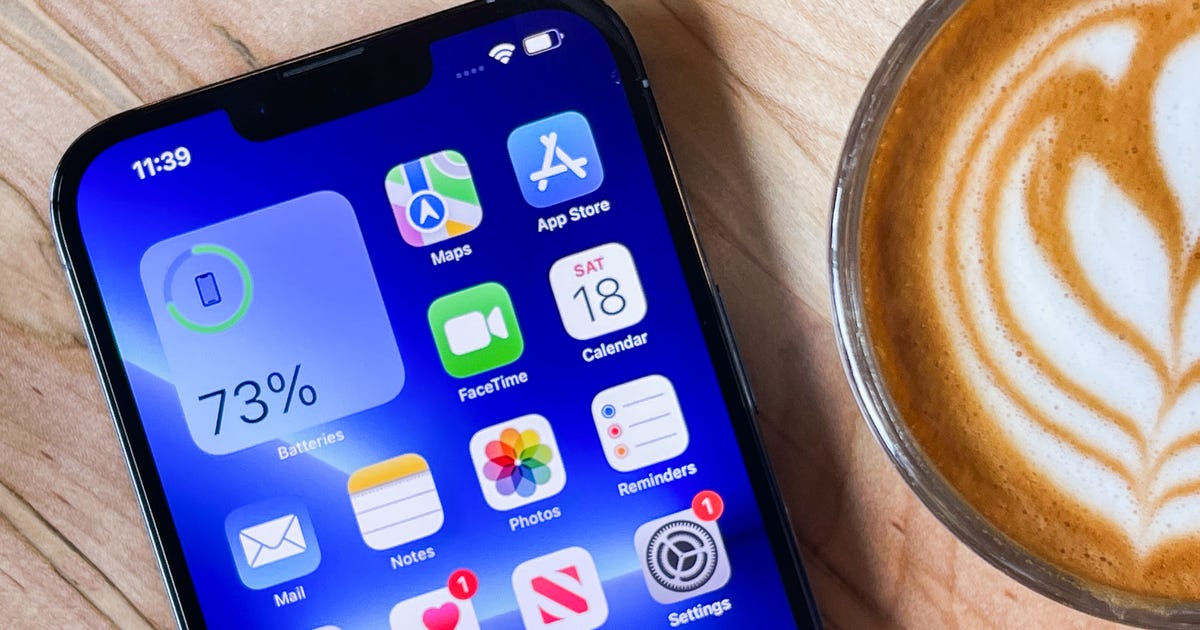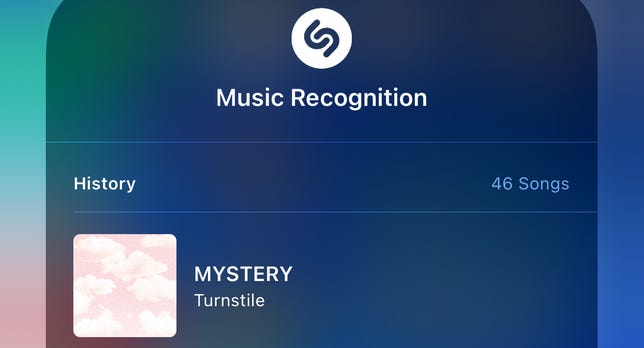
Unlock this hidden iPhone feature to quickly ID songs
You come upon a song, one that you've never heard before, and you're really feeling it, so of course you're curious to know the song title and artist. Maybe you ask someone nearby if they know it or you search the lyrics, but if that's not possible -- you've always got Shazam on your iPhone.
Although music identification apps are great for discovering new music, they're not really necessary to help you ID a song. In fact, your iPhone has a built-in feature known as Music Recognition, which is powered by Shazam, and allows you to quickly recognize songs directly from the Control Center, without having to download anything.
In this guide, we'll show you how to set up the feature, use it to identify music and find all the songs you recognize, which for some reason end up hidden on your iPhone.

Add the Music Recognition feature to the Control Center
Nelson Aguilar/CNETSet up your iPhone's music recognition feature
Before you can use the Music Recognition feature, you must first enable it. On your iPhone, go to Settings > Control Center and scroll down to the bottom of the page. Under More Controls, you should see Music Recognition. Tap the green plus sign next to it and that will add the button to your Control Center.
Quickly recognize songs on your iPhone
To use Shazam's built-in Music Recognition on your iPhone (it works with the iPad, too), simply swipe down from the top right of your iPhone to access your Control Center -- or swipe up from the bottom of the screen on devices with a home button -- and tap on Music Recognition.

Tap on the Music Recognition button in the Control Center to ID a song
Nelson Aguilar/CNETThe Music Recognition button will turn white and you'll see a notification at the top of the screen that says Shazam Music Recognition: On, which means that Shazam is listening for music (you might also see an orange led light on newer iPhone models, indicating that your microphone is turned on).
After a few seconds, the feature should tell you the song name and artist if it recognizes a song (you won't see anything if it doesn't). You'll see more information in a small notification that only appears for a few seconds at the top of the screen. If you tap on it, you'll be redirected to the Shazam App Clip, which is a bite-size version of the full app, so that you don't have to download anything from the App Store.
Unfortunately, unlike the Shazam app, the App Clip version does not store your songs recognized by the built-in Music Recognition feature. Instead, if you go back to the App Clip or even the full Shazam application, you won't find any information.
So where are all your songs recognized by the built-in Music Recognition feature?
How to find the hidden songs IDedd by your iPhone

Press down on the Music Recognition button to find all your already IDed songs
Nelson Aguilar/CNETJust like you would when using Music Recognition, swipe down from the top-right corner of your screen to access the Control Center, but instead of tapping on the Shazam button, hold and press for a long second or so.
A window for the Music Recognition feature will appear, showing your entire hidden history of songs recognized by Shazam through the built-in music ID feature. The number of songs will appear in the top right, and you can scroll down your list to view all your songs, with the most recently recognized songs at the top.
If you tap on a song, it will open in the Shazam App Clip. Here you'll have the option to play a preview of the song, open it in the music player of your choice, and view other top songs from the artist, the featured album, similar songs and more.
Pretty easy, right? If you're looking for other lesser-known features on your iPhone, check out our iOS 15 hidden features you didn't know you needed. You can also read our iOS 15 review, in case you haven't yet updated. And if you're looking to upgrade your iPhone, learn more about which model might be best for you.
Source
Tags:
- Unlock This Hidden Iphone Feature To Quickly Id Songs For Roblox
- Unlock This Hidden Iphone Feature To Quickly Id Songs That Work
- Unlock This Hidden Iphone Feature To Quickly Increase
- Unlock This Hidden Iphone Feature To Quickly Sell
- Unlock This Hidden Iphone Apps
- Unlock This Hidden Iphone Message
- Unlock Hidden Objects Sims 4
- Unlock Hidden Movies On Netflix
- Unlock This Device

